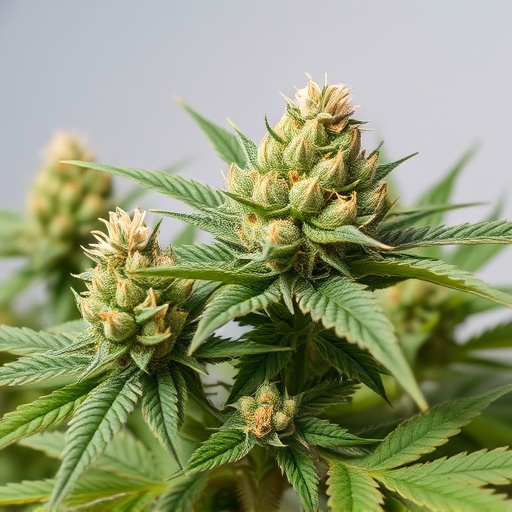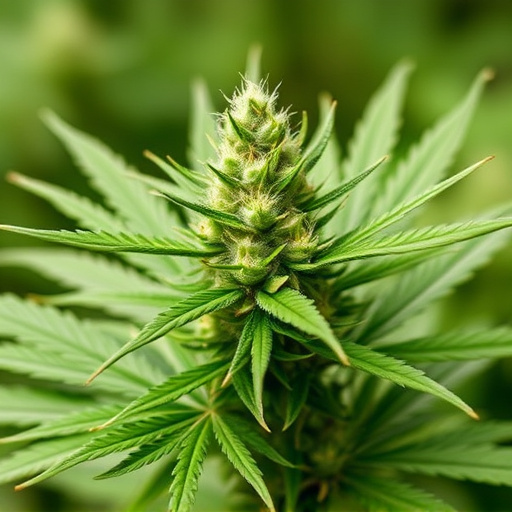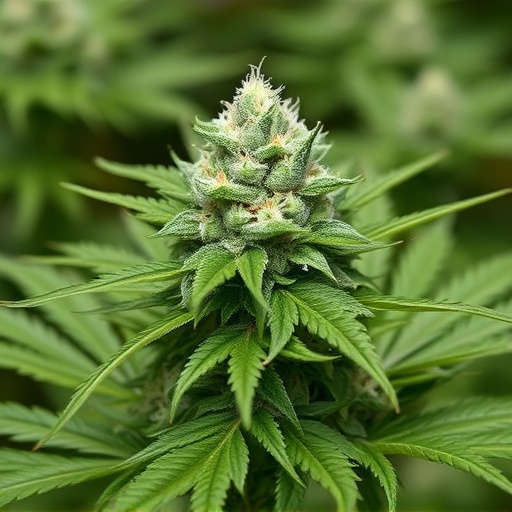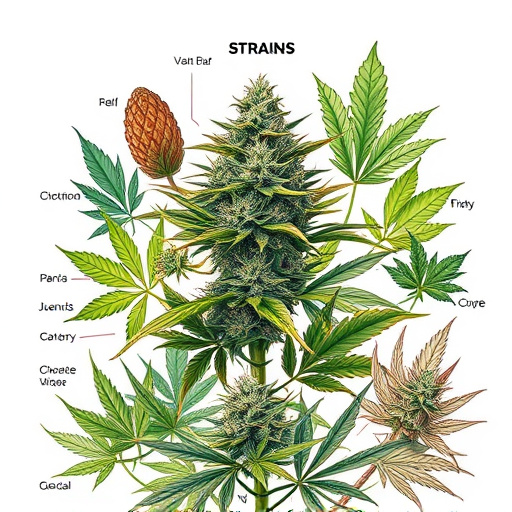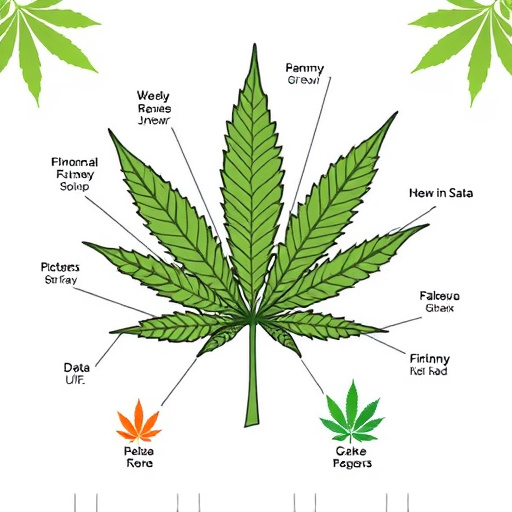THC in strains of cannabis influences appetite through its interaction with the endocannabinoid system (ECS), modulating eating behaviors. Cannabinoids bind to brain receptors CB1 and CB2, leading to varied effects on food intake – from increased cravings to suppression. Strains differ in THC levels, affecting hunger hormones differently; high-THC strains stimulate appetite, while low-THC or CBD-rich strains may suppress it. Selecting suitable strains of cannabis based on dietary or health goals can optimize these therapeutic benefits.
“Unraveling the impact of THC on hunger hormones is a fascinating journey into the intricate world of the endocannabinoid system. This compound, found in various strains of cannabis, has shown intriguing effects on regulating appetite.
In this article, we explore how THC interacts with our body’s natural balance to control hunger cues. From understanding the endocannabinoid system’s role to investigating different cannabis strains and their unique properties, we’ll delve into the science behind these potent plant compounds.”
- Understanding THC and Its Interaction with the Endocannabinoid System
- The Role of Cannabinoids in Regulating Appetite and Hunger
- Effects of Different Cannabis Strains on Hunger Hormones
Understanding THC and Its Interaction with the Endocannabinoid System

THC, or tetrahydrocannabinol, is a prominent compound found in various strains of cannabis and is known for its psychoactive effects. Beyond its impact on mood and perception, THC plays a fascinating role in regulating hunger hormones by interacting with the endocannabinoid system (ECS). This intricate system acts as a regulator for numerous physiological processes, including appetite and metabolism.
The ECS consists of endocannabinoids, receptors, and enzymes. When THC binds to cannabinoid receptors, particularly CB1 receptors located in the brain and CB2 receptors in the immune system, it triggers a cascade of events. This interaction can lead to changes in hunger cues, causing some individuals to experience increased appetite (often referred to as “the munchies”) while others may find themselves less hungry. Understanding these complex interactions provides valuable insights into how different strains of cannabis can influence eating behaviors and has implications for potential therapeutic applications in nutrition and healthcare.
The Role of Cannabinoids in Regulating Appetite and Hunger
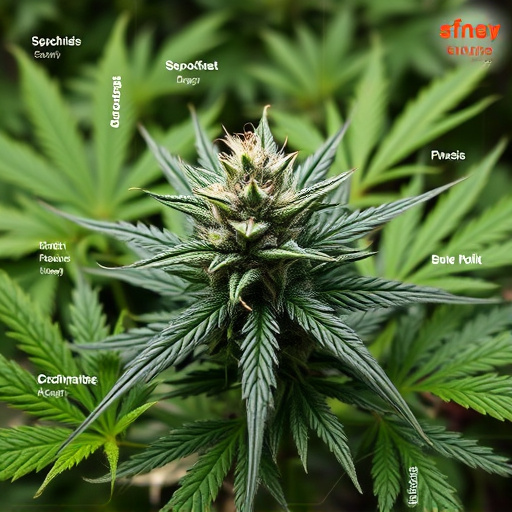
Cannabinoids, the active compounds found in strains of cannabis, play a significant role in regulating appetite and hunger. THC (Tetrahydrocannabinol), one of the most well-known cannabinoids, has been studied for its impact on these hormones. Research suggests that THC binds to specific receptors in the brain, such as CB1 and CB2, which are involved in controlling food intake and metabolism. This interaction can lead to changes in appetite, sometimes resulting in increased hunger or a decreased desire to eat.
The effect of THC on hunger hormones is complex and may vary depending on individual factors and dosage. Some users report heightened cravings for specific types of food, while others experience a suppression of appetite. Understanding these mechanisms is crucial, especially for individuals considering cannabis as a therapeutic tool for conditions like anorexia or weight gain issues. The modulation of appetite by cannabinoids offers potential benefits but also requires further exploration to optimize safe and effective use.
Effects of Different Cannabis Strains on Hunger Hormones
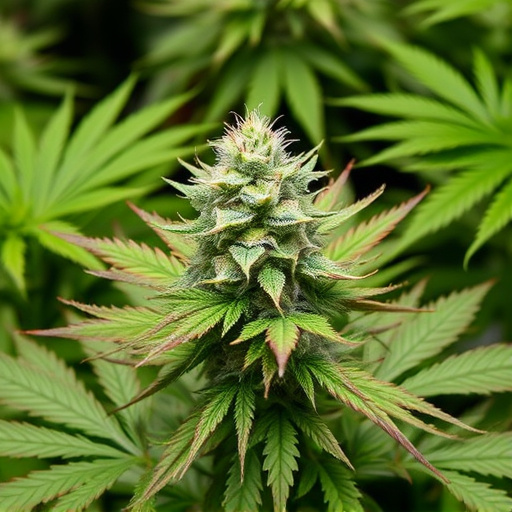
The effects of different strains of cannabis on hunger hormones can vary significantly based on their chemical composition, particularly the levels of tetrahydrocannabinol (THC). High-THC strains have been observed to stimulate appetite, leading to increased hunger and food intake. This is primarily due to THC’s ability to interact with the endocannabinoid system, which plays a crucial role in regulating hunger and satiety. Conversely, low-THC or CBD-rich strains may actually suppress appetite, potentially aiding in weight management and conditions like binge eating disorder.
Researchers have identified specific compounds within various strains of cannabis that target different receptors in the brain and body, influencing hunger hormones differently. For example, some strains high in cannabidiol (CBD) have been found to reduce cravings and promote feelings of fullness, while others may contain terpenes known for their appetite-stimulating properties. Understanding these nuances can help users select strains more suitable for their dietary or health goals.
THC, the primary psychoactive compound in cannabis, significantly impacts our appetite through its interaction with the endocannabinoid system. By understanding how different strains of cannabis affect hunger hormones, we can better appreciate the complex role of cannabinoids in regulating metabolism and potentially harness their effects for therapeutic purposes. Further research into these interactions may lead to innovative treatments for conditions involving appetite disorders.

